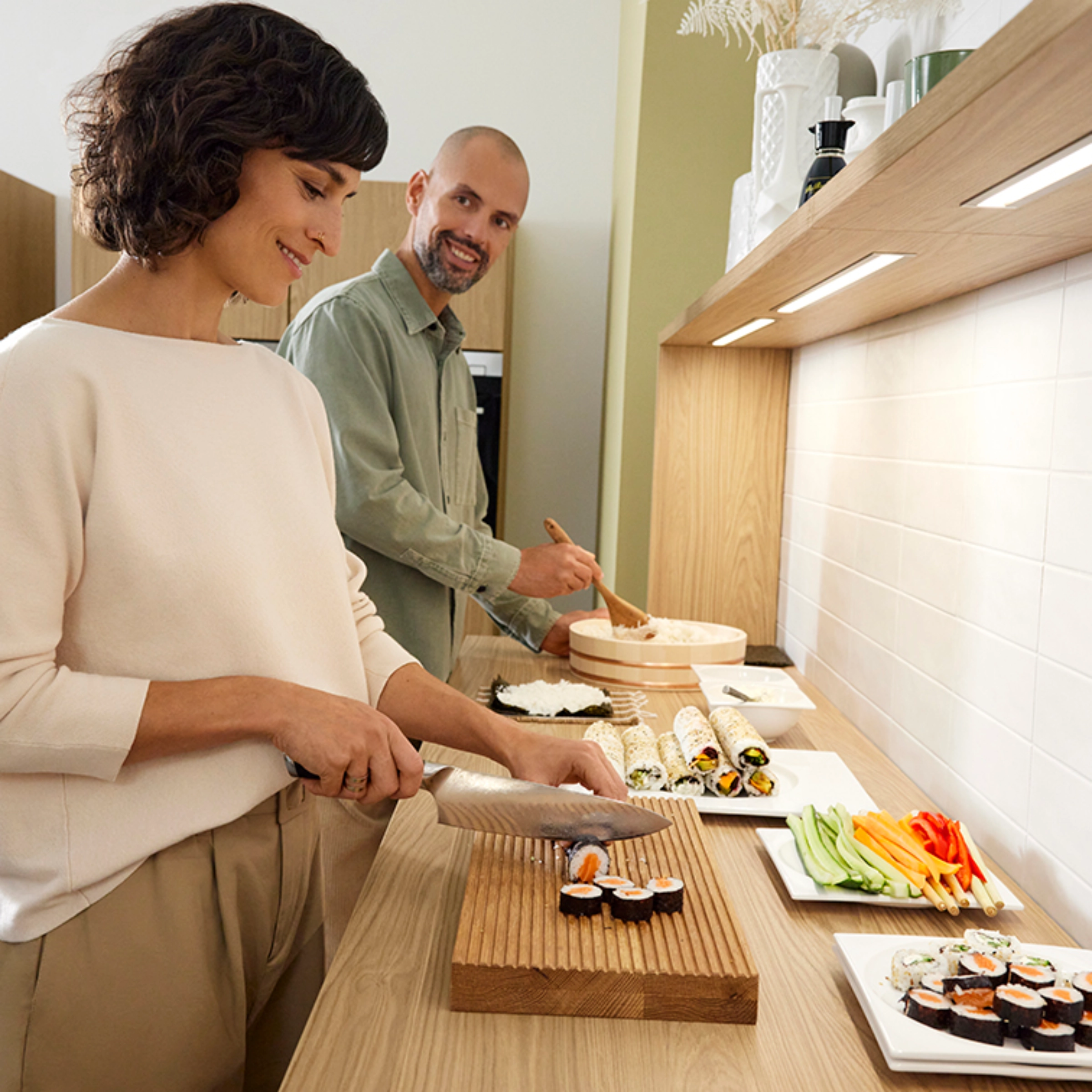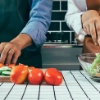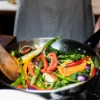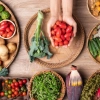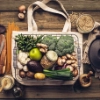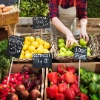Sustainable cooking

Simply stroll once around the cheapest supermarket, throw the tried-and-tested favorite products into your shopping cart, and at home prepare one of your standard dishes with as few moves as possible, preferably in a short amount of time – this or something similar was the everyday kitchen routine for many people for a long time. In times of climate change and growing awareness for sustainability, more and more people wish to live increasingly consciously, environmentally friendly, and sustainably. This means: less consumption, quality instead of quantity, and conserving resources whenever possible. In this article, we explain how the topic of sustainability can easily find its way into your kitchen, and we summarize the best tips and tricks for sustainable cooking for you.
Shop sustainably and store food
Sustainable cooking doesn't begin only with the choice of the right foods, but much earlier – on the way to the supermarket. Crucial for the carbon footprint of our food is also whether emissions are produced by driving to the supermarket. So feel free to leave your car behind and take short trips by bike or walk. This not only protects our environment but also keeps you healthy! If your groceries are too much to manage by bike or on foot, then public transportation can be a very good choice. If you can't avoid transporting by car, it is advisable to plan your shopping carefully in advance to avoid unnecessary trips.
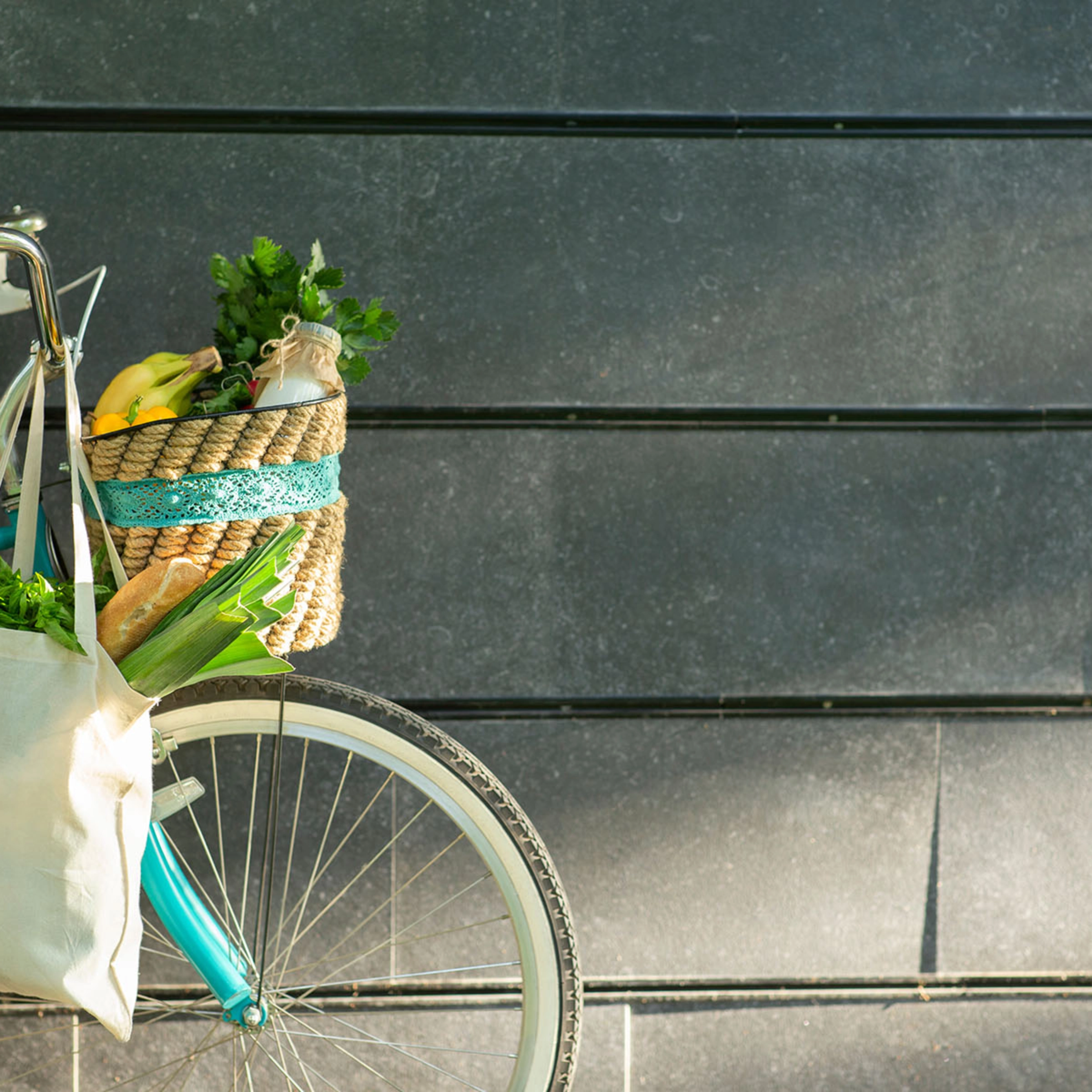
The good, old shopping list …
Good planning is half the battle. This also applies to sustainable shopping. These 4 tips help you when writing your shopping list:
1. Make a concrete plan of what you want to cook and eat over the coming days.
2. Get an overview and check your fridge and pantry: What is still available? What do you still need to buy?
3. Write a shopping list with specified quantities – digitally or by hand – which you can directly check off while shopping.
4. Tip: You might be able to avoid certain ingredients, like those you can't completely use up. Maybe these ingredients can be substituted by other, "more easily consumed" alternatives?
Seasonal, regional and organic
If you want to shop in a climate-friendly manner, the following rule of thumb will serve you well: regional, seasonal, little meat and preferably from organic origin. Organic labels make it easier for you to recognize ecologically sound products. Particularly with animal products as well as vegetables and fruit, it is advisable to opt for ecological quality.
Reducing plastic & single-use packaging
When choosing the right foods in the supermarket, it is important to also select those with the right packaging or even better, without packaging. Although Germany is considered a global recycling pioneer, only a portion of the plastic waste generated here is recycled. The rest is incinerated or ends up in huge landfills, from there eventually in nature, such as the ocean - or finds its way back into our food cycle. Reducing plastic already begins with your shopping. These tips will help you:
- Bring a jute or fabric bag with you
- Buy goods preferably loose and unpackaged
- Avoid fruit and vegetable bags
- Avoid food packaged in plastic (such as shrink-wrapped cucumbers)
- Avoid black plastic packaging, as these generally cannot be recycled at all
- Avoid convenience meals as these are almost always packed multiple times in different materials
- Prefer glass bottles and reusable bottles over single-use ones
- Buy jars instead of cans
Storing food properly and avoiding waste
After sustainably shopping for groceries, these ideally find a suitable place in the kitchen, kitchen cupboard or pantry. To ensure food stays good for as long as possible, it's best to store them in a pantry/cupboard, freeze or preserve them, and always check the best-before date.
Proper storage
Some daily-use ingredients can easily be kept in stock, such as grain products, canned foods, legumes and nuts. Stored dry and dark, these foods last significantly longer. Some ingredients rather belong in the refrigerator, others should be stored airtight in jars. Many fresh foods also can be wonderfully preserved! The motto here is: inform yourself and store correctly. Thus your foods last practically forever and won't need to be prematurely discarded and thus wasted.
Check the best-before date
The term best-before date (MHD) may be taken literally. It is not an expiry date. This means: Until this date, the manufacturer guarantees, under continuous proper storage, that an unopened product will not change its specific characteristics. However, this doesn't automatically mean that the product is unusable immediately after expiry of this date. Some unopened foods, stored correctly, can still be edible for months beyond their MHD, potentially changing only slightly in color or losing some flavor intensity.
Freeze instead of throwing away
Did you mistakenly buy too much and now can't manage to use up all fresh ingredients in time? No problem - simply freeze them!
- Fresh bread freezes beautifully when sliced and can be made crispy again by toasting.
- Ripe bananas simply peel, slice and into the freezer - the perfect base for banana bread and Nicecream (vegan ice cream).
- Berries freeze wonderfully and can easily be thawed later and blended with other fruits into smoothies.
- Vegetables freeze easily when diced.
- Soups, chili and stews freeze in individual portions - often taste even more flavorful after thawing.
If you want to store your food sustainably, we recommend avoiding the use of cling film and aluminum foil when packaging your food. Reusable lunch boxes, wax cloths or jars are ideal for packaging the foods you want to store.
Sustainable cooking:
Simple tips for every day
Cooking with little water
Water is both a foodstuff and an energy medium. It is used both in cooking as well as a basis for certain dishes and as a heat-conducting element for cooking raw food. By using water sparingly, cooking time is reduced and additional energy can be saved. Using a pressure cooker is particularly recommended for cooking. A pressure cooker allows savings of up to 30 percent electricity as well as a cooking time reduction of up to 50 percent.
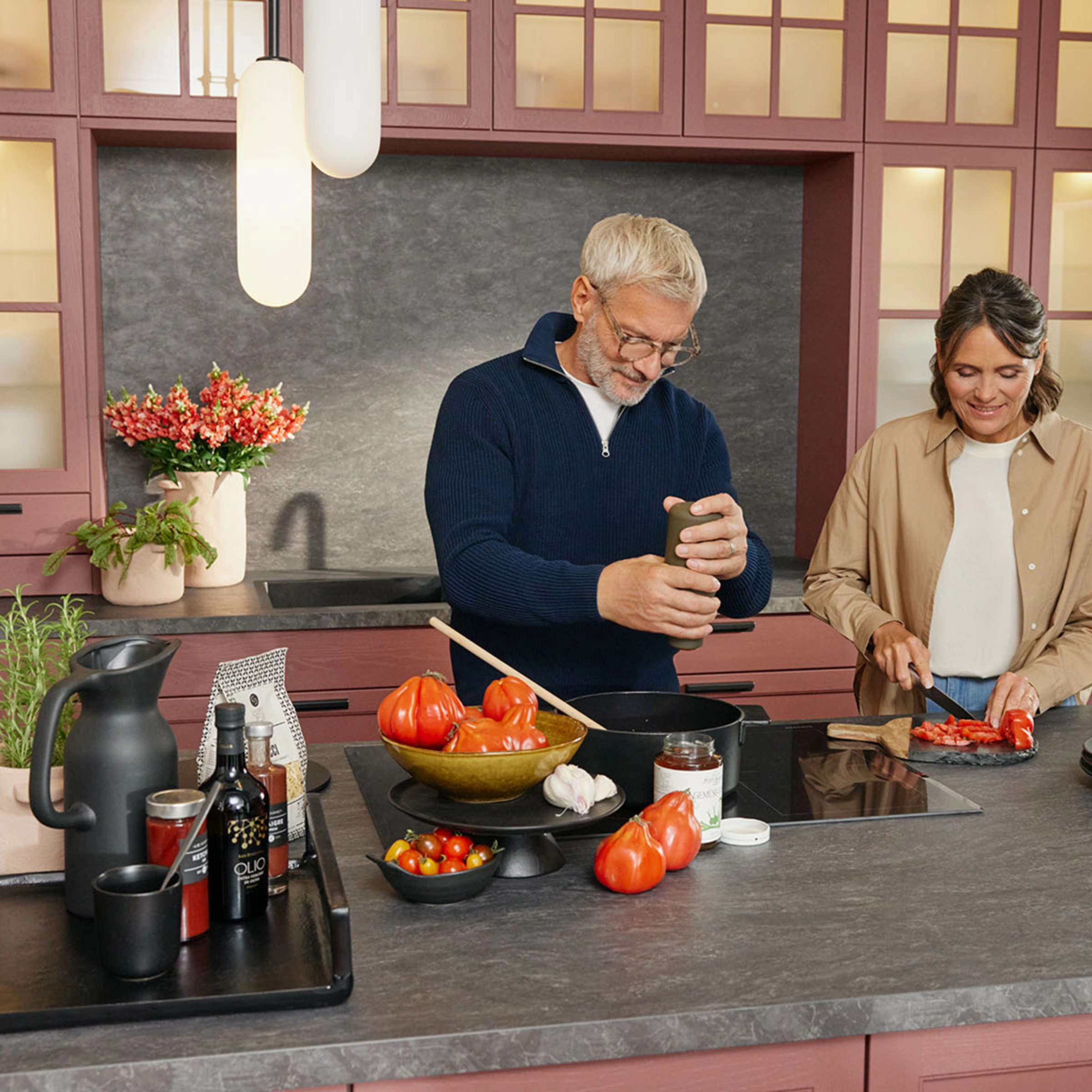
Using leftover foods
Even if the shopping is well-organized, sometimes food remains leftover. These leftovers often lend themselves wonderfully to cooking with friends or enhancing other recipes. And if all else fails, simply freeze the leftover foods or preserve them longer by canning.
3 simple and healthy recipes
Our recipe collection has something for every taste. Even some oriental dishes can sometimes be easily recreated.
Red Lentil Curry
Anyone who likes it Indian-style, healthy, but not too spicy, is well advised with our Red Lentil Curry. Legumes are very healthy, keep you full for a long time and give this curry its special taste. Just cook it yourself!
Pizza Margherita
You generally can't go wrong with a Pizza Margherita. It's always welcome at gatherings, popular with children and suits practically every occasion. And the best part: It's relatively easy to prepare. Convince yourself!
Börek
For this delicious Börek you really only need 4 ingredients. Add a crunchy mixed salad, a bit of yoghurt and voilà: It's ready, your homemade Oriental classic.
Energy-saving tips for cooking
- Use a kettle to boil water. For amounts under 1.7 liters, this is usually more energy-efficient than using a cooking pot. For larger quantities: boil as much water as possible in a kettle, and simultaneously heat the remaining amount in a pot.
- Please always use a suitable lid when cooking.
- Prepare several dishes simultaneously in the oven. Keyword: "Mealprep"
- Use residual heat when cooking and baking: feel free to turn off the stove a few minutes before cooking ends. The temperature remains sufficiently high for some time to finish cooking the dish.
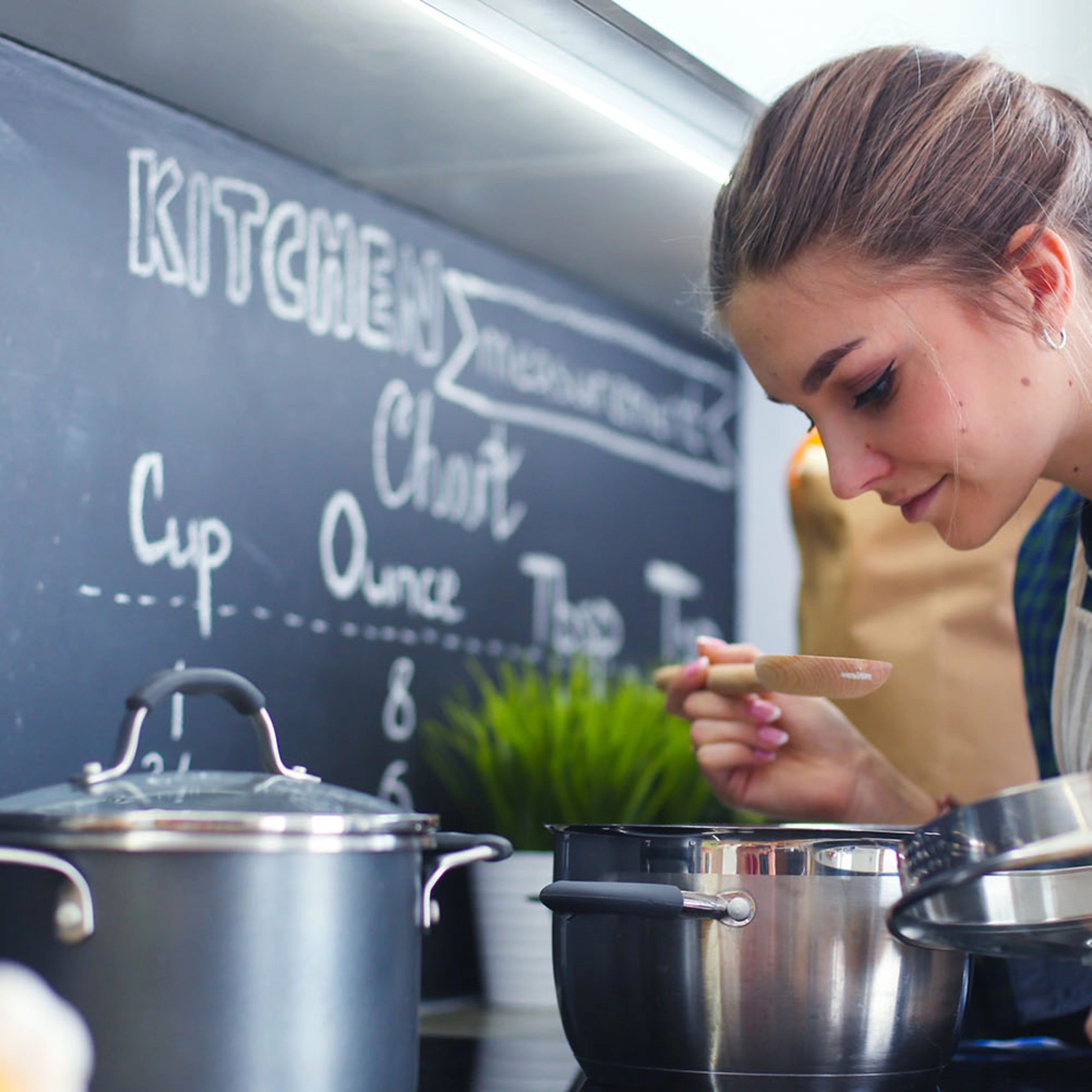
Correct Selection and Use of Kitchen Appliances
Modern kitchen appliances are an important factor for efficient energy consumption. These should absolutely be fully functional. Energy labels for kitchen appliances can also provide guidance when purchasing energy-efficient kitchen appliances.
When cooking, always choose the pot or pan that fits ideally in size onto the hob and has a perfectly fitting lid.
Sustainable disposal of waste
Even if you manage to reduce kitchen waste – it usually cannot be avoided entirely. Therefore, it pays off even more to optimally utilize the existing waste and recycling systems by properly disposing of all used materials.
Avoiding food waste
Even the most sustainably produced organic apple from the neighboring village becomes an environmental and climate issue if it spoils before you can use it. On average, 75 kilos of food per capita per year are thrown away in Germany alone. As a result, the energy, water, and land used in production go to waste. How can you counteract this? Essentially by carefully planning your meals and corresponding purchases, and also making good use or storage of any surplus food.
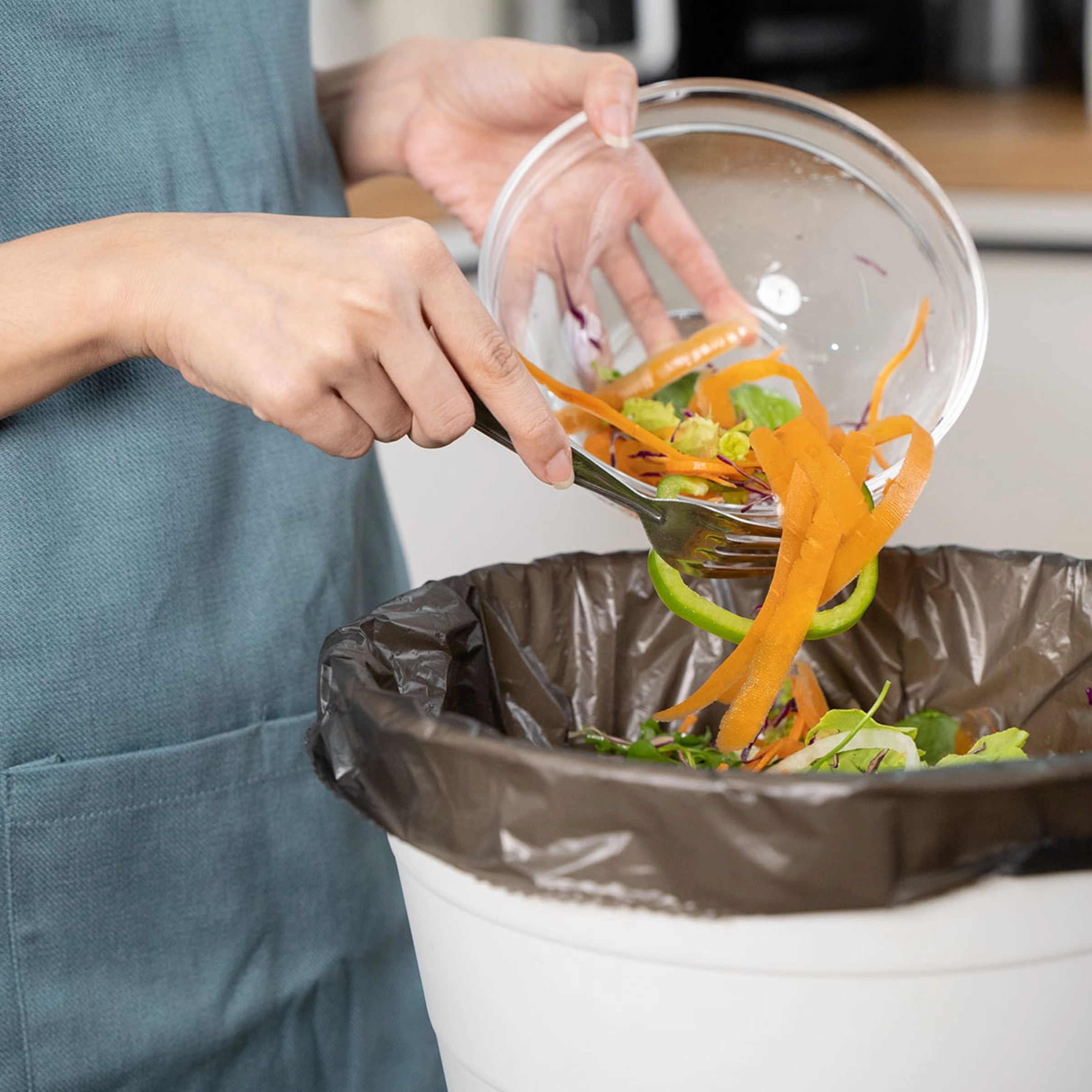
Waste separation and recycling
In everyday life, you can easily contribute to recycling more plastic and paper instead of burning it as residual waste.
- Always dispose of pure plastic and paper packaging separately from residual waste according to the waste separation regulations of your region. This maximizes the probability that all single-material packaging will indeed be recycled.
- Always completely remove the aluminum lid from yogurt cups!
- Some products have removable paper sleeves. Actively remove these sleeves before disposal and discard them separately in the paper waste.
- Typical white receipts belong in residual waste due to their chemical composition. Blue receipts, however, can go into the waste paper.
Waste sorting and composting organic waste
If you want to cook and live sustainably, waste separation is essential. Whether plastic, paper, organic or residual waste: each material has its own bin. Use them for the sake of the environment.
What can go into compost?
The general rule is: Anything that happens "before cooking" can go into compost. Already cooked or fried dishes and sauces belong in residual waste, as they attract rats and other pests to compost.
Recycling kitchen appliances
Don't just throw your broken kitchen appliances into the garbage, as they still contain significant quantities of valuable and scarce metals that can be recovered. In addition, it is important to dispose of hazardous substances safely, which otherwise quickly end up in our air, soil, and ultimately our bodies. If the manufacturer does not take back your appliance for disposal, then the correct solution is: electronic scrap collection. Valuable materials can still be recovered from old devices there, and unnecessary harm to the environment can be avoided.
Cook sustainably - live longer
Did you know that according to studies, people who regularly cook themselves live longer?
Those who engage more deeply with their food and prepare their meals themselves usually also eat healthier. Sustainable cooking is thus not only good for our environment, but definitely also for our health.
Our advice: plan your meals in advance and cook several portions at once. This way, you will save time and still have regularly something healthy on your plate.
